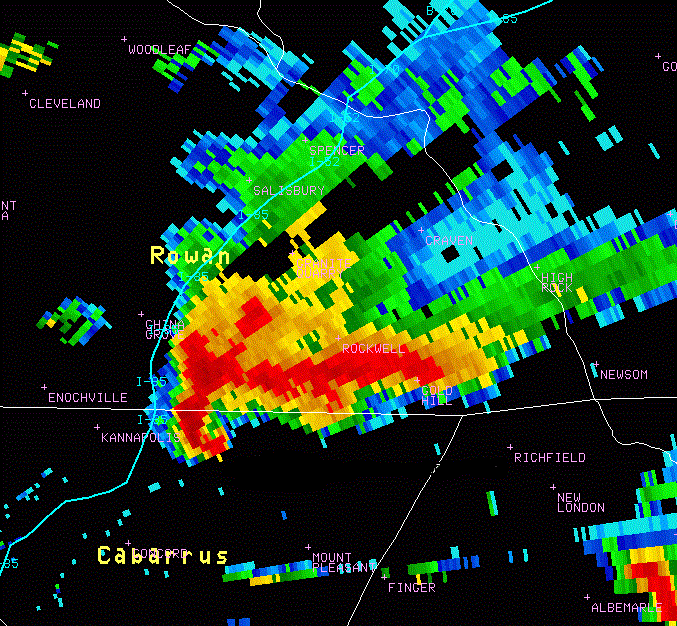The Appalachian Mountains in the Eastern United States have a considerable impact on the day-to-day weather across the region. Significant weather events such as severe convection present a substantial challenge to forecast accurately when in the presence of complex terrain. This has been underscored by several high-impact supercell events in the Appalachian region, including those with significant tornadoes occurring at high elevations that caused damage and injuries. While there have been several studies that have explored terrain-induced effects on individual supercells and tornadoes, few have more broadly examined the storm-scale modifications to supercell thunderstorms as they interact with topography. Additionally, the typical environments that favor supercell production of severe wind, hail, or tornadoes across the elevated region have not been well documented.
The project entailed three integrated components. First, numerous severe and non-severe supercell cases within the central and southern Appalachians were categorized according to a variety of climatological, environmental, and radar-based characteristics, including whether they were able to cross or not cross substantial elevated terrain. Second, the inflow environment of each supercell was examined to determine if sounding-based forecast metrics can effectively discriminate between “crossing” and “non-crossing” supercells. Third, idealized simulations initialized with composite soundings from observed cases were used to develop generalized conceptual models of supercell behavior in elevated terrain. Finally, these collective results were synthesized for use in operations and to clarify the governing physics of how terrain can modify supercell structure and produce severe weather.
This line of research was a collaborative effort with Dr. Casey Davenport (UNC Charlotte), six NWS forecast offices [Blacksburg (VA), Charleston (WV), Greenville-Spartanburg (SC), Jackson (KY), Morristown (TN), and Atlanta (GA)] and the NOAA Storm Prediction Center. The project is funded by a grant through the NOAA CSTAR Program.
Relevant Publications:
Riggin, R.R., C.E. Davenport, M.D. Eastin, K.E. McKeown, S.M. Purpura, and B. Katona, 2025: Idealized simulations of supercell thunderstorms traversing the Appalachian Mountains. Monthly Weather Review, 153 (3), 373-402.
McKeown, K.E., C.E. Davenport, M.D. Eastin, S.M. Purpura, and R.R. Riggin, 2024: Radar characteristics of observed supercell thunderstorms traversing the Appalachian Mountains. Weather and Forecasting, 39 (4), 639-654.
Purpura, S.M., C.E. Davenport, M.D. Eastin, K.E. McKeown, and R.R. Riggin, 2023: Environmental evolution of supercell thunderstorms interacting with the Appalachian Mountains. Weather and Forecasting, 38 (1), 179-198.

